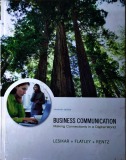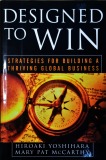Tài liệu Thư viện số
- Cơ khí, Chế tạo máy, Cơ điện tử (648)
- Công nghệ ô tô (226)
- Công nghệ thông tin (1246)
- Kỹ thuật Điện, Tự động hóa (433)
- Điện tử, Viễn thông (423)
- Lịch sử, Địa lý, Du lịch (214)
- Công nghệ Hóa, Môi trường (519)
- Công nghệ May & TKTT (186)
- Kế toán, Kiểm toán (500)
- Quản trị kinh doanh (1135)
- Tài chính - Ngân hàng (53)
- Ngôn ngữ (1926)
- Toán, Lý (374)
- Chính trị, Triết học, Pháp luật (316)
- Thể chất - GDQP (28)
- Văn học, xã hội (483)
- Đồ án, Khóa luận TN (6)
- Luận văn, luận án (3)
- Tài liệu tham khảo khác (825)
Danh mục TaiLieu.VN
- Mẫu Slide Powerpoint
- Kinh Doanh Marketing (39320)
- Kinh Tế - Quản Lý (30571)
- Biểu Mẫu - Văn Bản (123435)
- Tài Chính - Ngân Hàng (23744)
- Công Nghệ Thông Tin (56521)
- Tiếng Anh - Ngoại Ngữ (9738)
- Kỹ Thuật - Công Nghệ (44193)
- Khoa Học Tự Nhiên (27343)
- Khoa Học Xã Hội (43227)
- Luật - Kinh tế luật (6560)
- Văn Hoá - Thể thao - Du Lịch (71283)
- Y - Dược - Sức Khoẻ (83234)
- Nông - Lâm - Thuỷ sản (16418)
- Luận Văn - Báo Cáo (217024)
- Tài Liệu Phổ Thông (244133)
- Trắc Nghiệm Online (213578)
- Trắc Nghiệm MBTI
- Trắc Nghiệm Holland
Corporate After Shock
Thông tin trích dẫn: Corporate After Shock. Christopher L. Culp; William A. Niskanen. NXB John Wiley &Sonc, 2003.
Vui lòng truy cập địa chỉ sau để download và biết thêm thông tin chi tiết: http://lib.haui.edu.vn/opac80/Detail.aspx?id=2706&f=fulltext&v=Corporate+After+Shock
Bạn đọc có thể tìm thêm tài liệu tại Thư viện ĐH Công nghiệp Hà Nội tại địa chỉ: http://lib.haui.edu.vn/opac80/
Abstract
In the wake of Enron’s implosion and other major corporate meltdowns, there have been hasty calls for stricter laws to regulate the markets and products in which these companies were involved. But without proper analysis of the situation, these responses may unknowingly cause greater damage to the economy and investors than the original events. To avoid rushing into politically charged action and ensure that appropriate measures are implemented, we must first take the time to consider what really went wrong, then carefully decide how to prevent a repeat of such corporate disasters.
In an effort to curb the unnecessary "man-made aftershocks" that continue to ripple throughout the business world today, Corporate Aftershock: The Public Policy Lessons from the Collapse of Enron and Other Major Corporations has been written as a reasoned, informed response to the numerous proposals to restrict derivatives, stifle structured financing activities, and amend shareholder protection principles and practices following the failure of Enron and other corporations. Editors Christopher Culp and William Niskanen have assembled an expert cast of contributors, each of whom are leaders in their respective fields–from credit risk management to energy and derivatives markets–to provide an unbiased public policy analysis of the failure of Enron and other major corporations.
Comprised of five distinct sections, Corporate Aftershock offers an in-depth examination and straightforward explanation of issues that focus on the policy lessons specific to the markets Enron traded in, as well as the specialized financial instruments it used in its endeavors.
Topics discussed include:
Corporate innovation and governance
Energy and derivatives markets after Enron
Structured finance
Credit risk mitigation
Regulating corporate innovation after Enron
Was Enron an innovator, a sham, or a bit of both? What can we learn from Enron’s failure that might impact the future operation and regulation of energy and derivatives markets? What role did accounting and disclosure policies play in Enron’s abuse of otherwise legitimate structured finance activities? Without rushing to judgment, Corporate Aftershock answers these and many other questions. Dealing with corporate disasters through hasty reactions rarely solves the true problems. With Corporate Aftershock as your guide, you’ll learn what sensible solutions can be made in the wake of fallout from corporate disasters.
Vui lòng truy cập địa chỉ sau để download và biết thêm thông tin chi tiết: http://lib.haui.edu.vn/opac80/Detail.aspx?id=2706&f=fulltext&v=Corporate+After+Shock
Bạn đọc có thể tìm thêm tài liệu tại Thư viện ĐH Công nghiệp Hà Nội tại địa chỉ: http://lib.haui.edu.vn/opac80/
Abstract
In the wake of Enron’s implosion and other major corporate meltdowns, there have been hasty calls for stricter laws to regulate the markets and products in which these companies were involved. But without proper analysis of the situation, these responses may unknowingly cause greater damage to the economy and investors than the original events. To avoid rushing into politically charged action and ensure that appropriate measures are implemented, we must first take the time to consider what really went wrong, then carefully decide how to prevent a repeat of such corporate disasters.
In an effort to curb the unnecessary "man-made aftershocks" that continue to ripple throughout the business world today, Corporate Aftershock: The Public Policy Lessons from the Collapse of Enron and Other Major Corporations has been written as a reasoned, informed response to the numerous proposals to restrict derivatives, stifle structured financing activities, and amend shareholder protection principles and practices following the failure of Enron and other corporations. Editors Christopher Culp and William Niskanen have assembled an expert cast of contributors, each of whom are leaders in their respective fields–from credit risk management to energy and derivatives markets–to provide an unbiased public policy analysis of the failure of Enron and other major corporations.
Comprised of five distinct sections, Corporate Aftershock offers an in-depth examination and straightforward explanation of issues that focus on the policy lessons specific to the markets Enron traded in, as well as the specialized financial instruments it used in its endeavors.
Topics discussed include:
Corporate innovation and governance
Energy and derivatives markets after Enron
Structured finance
Credit risk mitigation
Regulating corporate innovation after Enron
Was Enron an innovator, a sham, or a bit of both? What can we learn from Enron’s failure that might impact the future operation and regulation of energy and derivatives markets? What role did accounting and disclosure policies play in Enron’s abuse of otherwise legitimate structured finance activities? Without rushing to judgment, Corporate Aftershock answers these and many other questions. Dealing with corporate disasters through hasty reactions rarely solves the true problems. With Corporate Aftershock as your guide, you’ll learn what sensible solutions can be made in the wake of fallout from corporate disasters.
Từ khóa: Corporate After Shock, Quản trị kinh doanh, Christopher L. Culp; William A. Niskanen
5 p tailieu_haui 21/06/2022 110 0






